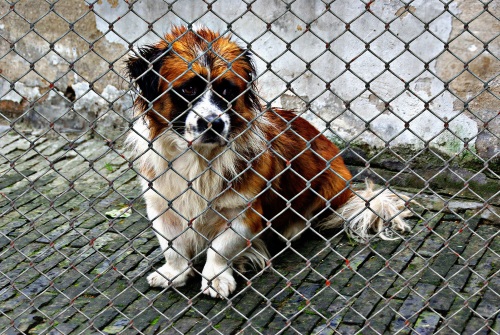New Sentencing Guidelines for Animal Cruelty Offences

Toughening Up On Causing Animal Distress, Unnecessary Suffering and Failure to Ensure Animal Welfare Form Part of New Sentencing Guidelines for Animal Cruelty
Updated sentencing guidelines for animal cruelty offences that reflect changes introduced by the Animal Welfare (Sentencing) Act 2021, were published earlier this week by the Sentencing Council following consultation.
For the first time, a new ‘Animal cruelty’ guideline gives judges and magistrates in England and Wales guidance for sentencing the most serious animal cruelty offences, including causing unnecessary suffering, tail docking and animal fighting.
The Council developed the guideline after the Animal Welfare (Sentencing) Act 2021 increased the maximum penalty for these offences from six months to five years’ custody.
A second guideline also published today, ‘Failure to ensure animal welfare’, revises elements of the Council’s existing animal cruelty sentencing guideline and applies to offences under section 9 of the Animal Welfare Act 2006: breach of duty of person responsible for animal to ensure welfare.
This revised guideline, which applies in magistrates’ courts only, includes new aggravating factors for a significant number of animals harmed, the offender having a professional responsibility for the animals and offence motivated by financial gain.
Both guidelines have been developed in accordance with the Council’s usual procedures, which include public consultation and analysis of current sentencing practice. The guidelines, which apply to adults only, come into force on 1 July 2023.
How the guidelines have evolved
During the consultation process for these new guidelines a small number of respondents, including the RSPCA, called for ‘ill treatment in a commercial context’ to be moved from medium to high culpability, largely to reflect the financial gain involved in these cases.
The West London Magistrates’ Bench also suggested that factors should be added across the three levels of culpability to reflect differing degrees of financial gain involved, while the Crown Prosecution Service (CPS) proposed a high culpability factor of ‘organised criminal activity’.
Financial Gain
The Sentencing Council considered these revisions and felt the wording of culpability factors as consulted on is sufficiently broad, allowing sentencers to take the level of financial gain for the offender into consideration.
It has, however, included a new aggravating factor to try to capture instances where substantial financial gain is involved – both anticipated and actual – but which might not otherwise fall under the proposed culpability factor of ill treatment in a commercial context.
Six respondents, including Battersea Dogs and Cats Home and the Dogs Trust, called for the inclusion of a new high culpability factor for instances where an offender has coerced, intimidated or exploited others to offend, to mirror the lower culpability factor of ‘involved through coercion, intimidation or exploitation’.
Failure to Seek Treatment
The Council agreed and this has now been added to the list of high culpability factors. The Legal Committee of HM Council of District Judges (Magistrates’ Courts) and the Justice Committee suggested making clear that the inclusion of a failure to seek treatment in medium culpability would only cover instances where this was intentional/deliberate, rather than due to other causes.
As this wording is included as part of the wider medium culpability factor of a ‘deliberate disregard for the welfare of the animal’ the Council believes this is already sufficient, but has agreed to slightly amend the wording to make this clear, with the addition of the word ‘by’, so that the factor reads ‘deliberate disregard for the welfare of the animal (including by failure to seek treatment)’.
Distress Caused to an Animal
Twelve respondents, including major animal charities, argued for a new harm factor to be added covering the psychological or emotional harm caused to the animal. In addition, the West London Magistrates’ Bench called for more consideration of the suffering caused to humans, whether this was emotional distress or financial loss caused to the owners, or where the offence was committed in front of children. More broadly, the Justices’ Clerks’ Society wanted consideration of cases where distress has deliberately been caused to those who witness the cruelty within harm rather than in aggravating factors.
A number of respondents, including the RSPCA and other animal charities, called for the top of the offence range to be increased further, to four or five years, to better reflect the change in statutory maximum.
The Seriousness of Animal Cruelty Offences
The Council gave very detailed consideration to all of the views provided by respondents. It recognises the need to convey the seriousness of animal cruelty offences, and to take account of the will of Parliament in raising the statutory maximum sentence. However, there is also a need to maintain proportionality with assault offences committed against human victims, and to keep animal cruelty distinct from this.
As such, the Council has agreed to accept the Justice Committee’s suggestion and to increase sentences for the most serious offences by six months, raising the starting point for cases of category 1 harm and high culpability (box 1A in the sentencing table) to two years’ custody, and the top of the category range for these offences to 3 years 6 months’ custody.
The Council does not believe it is feasible to raise sentence levels any further without risking animal cruelty offences being treated as equivalent to violent offences or those involving injury to human victims, such as an assault involving a weapon or resulting in serious physical injury.
Levels of Culpability
In line with a suggestion from the Justices’ Clerks’ Society and responses from individual magistrates, the Council has also agreed to narrow the gap between boxes 1B and 1C in the sentencing table (category 1 harm and medium/lower culpability) to aid sentencers when assessing cases that may sit on the borderline between culpability levels.
To do this, the starting point and the top of the category range for cases of category 1 harm-lower culpability (1C) have been increased, to a medium level community order and a high level community order respectively, while the bottom of the category range for cases of category 1 harm-medium culpability (1B) has been widened to include a high level community order, allowing overlap between boxes.
In recognition of the pain and distress that will have been caused to animals in all cases of category 1 harm, even where the offender has a lower level of culpability, the Council has also agreed to raise the bottom of the category range for box 1C to a low level community order, rather than a Band B fine as consulted on, effectively removing fines from the scope of sentences for all cases involving a higher level of harm.
What difference will this make?
Under the updated guidelines, sentences for the most serious offences would be expected to increase. Sadistic or extreme cases or cases involving prolonged incidents of serious cruelty will be assessed at the highest culpability. Cases involving multiple incidents or the use of significant force will also increase an offender’s culpability.
Where an offender’s actions have caused an animal to die or sustain life-threatening injuries, or have caused substantial pain or suffering, this may also attract a higher sentence than previously.
Where a case affects a significant number of animals, involves images of the cruelty being shared on social media, or is committed in the presence of children, these will now be treated as aggravating factors.
How We Can Help
If you have any questions in relation to these new sentencing guidelines for animal cruelty offences then please feel free to get in touch by calling us on 0161 477 1121 or email us.


